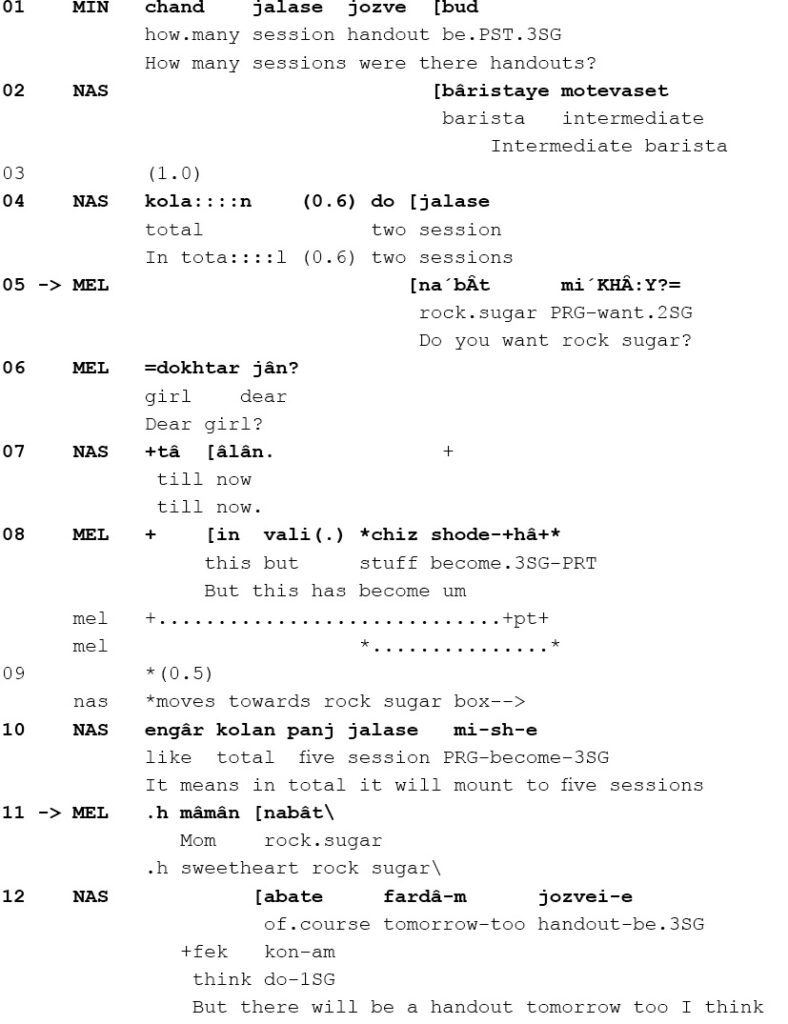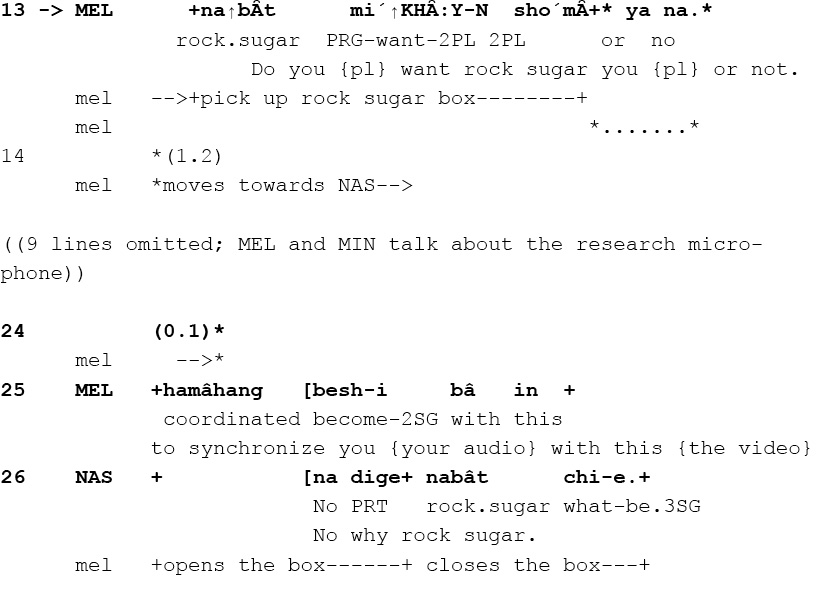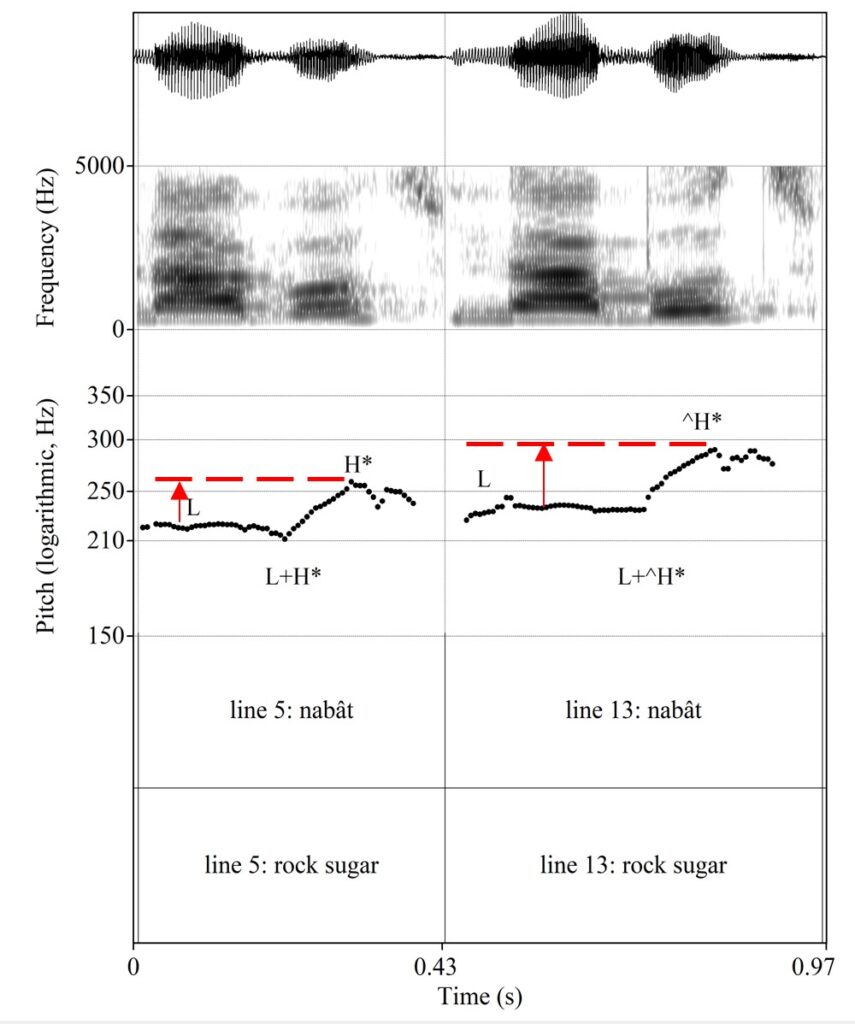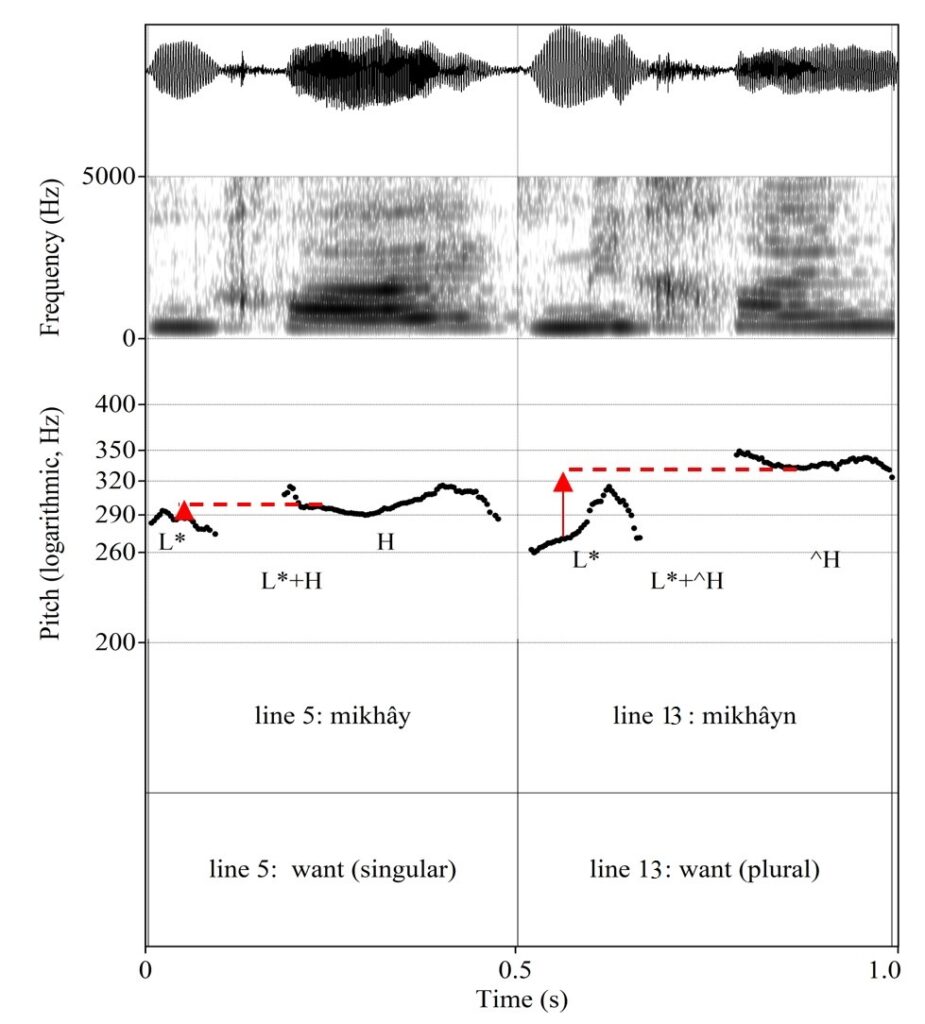By Reihaneh Afshari, PhD student at University of York
In social interaction, the address form has a lot to say about the speaker’s stance or the social action performed through a turn at talk (e.g., Butler, Danby, & Emmison, 2011; Clayman, 2010; Lerner, 2003; Rendle-Short, 2010). Jefferson (1973, p. 48) describes address forms as ‘relation-formulating’. In languages with a pronominal T-V (after tu and vos in Latin) distinction, this relation-building property is treated as so conventionalized that many sociolinguists dichotomize pronouns into “less formal T pronouns versus more formal V pronouns”, as Clyne et al. (2006, p. 284) report. Power, solidarity, and politeness are among factors reported to determine speaker’s selection of T versus V pronouns (Brown & Gilman, 1968; Brown & Levinson, 1987). Some recent studies question the theoretical assumptions underlying such dichotomies (see e.g., Clyne et al, 2006); nevertheless, to fill the gap, many of them still rely on similar macro-social constructs. For example, in her investigation of Persian, Nanbakhsh (2012) acknowledges that, contrary to the long-established belief, shomâ (second-person plural pronoun – V pronoun – in Persian) can be used to address an intimate coparticipant, but her findings are still based on macro constructs such as ‘power’ and ‘formality’.
The report below comes from a work-in-progress which shows that sometimes a speaker’s choice of address form is governed by moment-by-moment contingencies at a micro-level of interaction. Using the methods of conversation analysis, I analyze a representative example, from a larger collection of sequences (n=40 so far) of the Persian V-pronoun shomâ or its verb inflectional form –id/-in when they address one intimate co-participant. So far, the analysis shows that the V-pronoun can be used to hold the coparticipant accountable for breaking some normative expectations.
An example
The Persian plural pronoun shomâ and its inflectional verb suffixes id/in are sometimes used to refer to one coparticipant when the coparticipant has failed to perform an expected action. The pronoun can contribute to a package by which the pronoun-speaker negatively sanctions the coparticipant for the interactional failure. This package in the following example is the V-pronoun shomâ alongside morpho-syntactic and prosodic upgrading (Curl, 2005; Ogden, 2006). Melisa has just poured her adult daughter, Nasima, some tea while Nasima and Minuvash (sisters) are talking about Nasima’s coffee shop training courses. Melisa asks Nasima if she would like rock sugar with her tea, using a second-person singular pronoun to address Nasima. Nasima provides no response and Melisa pursues a response twice (Pomerantz, 1984; Stivers & Rossano, 2010). It is in the second pursuit turn where Melisa changes the T-pronoun in the original question to a V-pronoun to refer to Nasima. The plural pronoun is used when the coparticipant has failed to fulfil the normative expectation of providing an answer to a question and in this context contributes to negatively sanctioning the coparticipant for her failure.
Extract 1. RAY036a(2), 01.25


Two different sequences happen in parallel. The first sequence is launched by Minuvash, addressing Nasima to request information on Nasima’s coffee training course (line 1). The second sequence is initiated by Melisa, again addressing Nasima, to offer her rock sugar with her breakfast (line 5). Therefore, one participant (Nasima) is the selected addressee in two different sequences (request for information and offer). Our focus is on the offer sequence where Melisa pursues a response from Nasima who is engaged in the request sequence. First, I discuss the sequential order of events; then I zoom into the offer turns and compare their design features.
Between the original offer (line 5) and the first pursuit (line 11), there are three opportunities in which the offer-recipient could have produced a response, but none was produced. After the original offer (line 5), there is the first opportunity for Nasima to respond. The original offer is produced in terminal overlap with Nasima’s response to Minuvash’s question (line 4), where Nasima can be seen to have completed the request sequence and thus can be selected for a new sequence – the offer. Melisa adds an increment to the offer, addressing Nasima with an endearment phrase (line 6). Given that the address TCU (line 6) is latching to the offer TCU (line 5), line 7 is analyzed to be the first interactional slot where Nasima is normatively expected to produce a response. However, she remains engaged in the request sequence by expanding her answer to Minuvash’s question (line 7).
The second opportunity in which Nasima could have responded to the offer is the half a second silence at line 9. This silence comes after Melisa makes an assessment((‘This’ in line 8 refers to the tea in front of Nasima, which is conveyed through Melisa’s point towards Nasima’s tea (note the embodied annotation in line 8). The actual assessment term is not produced.)) about the tea (line 8) and concurrent to her moving toward the rock sugar box on the other side of the kitchen (line 9), showing preparation for performing the offer.
The third opportunity is at line 10 in which Nasima expands her answer to Minuvash’s question further by adding more information rather than responding to the offer. Therefore, the original offer is responded neither on the first possible opportunity (i.e., the slot at line 7), nor later (i.e., in the slots at lines 9 and 10).
After three missed opportunities to respond, Melisa pursues a response twice (line 11 and 13). In the first pursuit (line 11), Melisa addresses Nasima with an endearment word. However, the pursuit turn is cut-off by Nasima, again expanding her answer to Minuvash’s question (line 12). At this point, Melisa issues the second pursuit as she picks up the rock sugar box (line 13). I explain the design features of this turn below, but here it is noteworthy that even this second pursuit does not receive any response despite the noticeable silence at line 14 and despite Melisa’s movement towards Nasima with the rock sugar box in her hand. It is only when Melisa stands next to Nasima and starts opening the box that Nasima finally produces a response, rejecting the offer (line 26).
Now, compare the design features of the original offer (line 5) with the second pursuit (line 13, Table 1). The first pursuit (line 11) is excluded from this comparison since it is abruptly ended and it contains no pronouns, which is our main focus. Syntactically, both turns are designed in a polar interrogative format((In Persian, interrogativity can be conveyed through the rising final pitch movement of a sentence (Farshidvard, 2009, p. 66).)). The interrogative in the original offer is simple and minimal in terms of its lexical components. The first lexical component is the object of the sentence nabât ‘rock sugar’ which is being referred to for the first time, so to make the TCU pragmatically comprehensible, reference to it is essential. The second lexical component is the verb mikhâ-y ‘want-you.SG’. The pursuit, on the other hand, is lexically extended: firstly, the sentence object nabât ‘rock sugar’ is repeated even though it is not the first time it is being referred to. It is a locally initial reference form in a locally subsequent position (Schegloff, 1996). This object could have been dispensed with since a transitive verb in Persian can appear without its object if the object can be inferred from the context. Secondly, the subject shomâ ‘you.PL’ is inserted. (Persian is a pro-drop language and in the original offer, the subject was dropped). Thirdly, the interrogative is conjunctive; that is, the coordinating conjunction yâ ‘or’ and its following conjunct na ‘not’ follows the first conjunct. This makes an alternative question. An alternative question like this structurally prefers two different responses: confirmation is preferred by the conjunct before yâ ‘or’ and disconfirmation is preferred by the conjunct after it. In other words, ‘Do you want rock sugar’ structurally prefers a confirmation, and ‘not’, a disconfirmation. The alternative question, thus, provides the recipient grounds for both a preferred and dispreferred response and as such prompts the offer-recipient to respond by implicitly treating any kind of response (preferred or dispreferred) as acceptable.
| Line | TCU | Interrogative (syntax) | Subject (syntax) | Verb suffix (morphology) | Tonal scaling (prosody) |
| 5 | naˊbȂt miˊKHȂ:-Y? Do you {SG} want rock sugar? | simple | dropped | singular | No upstep |
| 13 | na↑bȂt mi↑ˊKHȂ:-YN shoˊmȂ yâ na. Do you {PL} want rock sugar you {PL} or not? | conjunctive | inserted (plural) | plural | Pitch upstep |
The prosodic design of the original offer and the pursuit is also different. Firstly, the two recurring content lexical components – nabât and mikhây(n) – in the original offer and the pursuit differ in terms of their tonal scaling (Ladd, 2008, p. 169). Consider the f0 configuration of the word nabât in the original offer and the pursuit (Figure 1). In both turns, nabât has the same overall pitch configuration (bitonal L+H*). However,the H* in the pursuit is phonetically realized at a higher F0 level than in its counterpart in the original (L+H* vs. L+^H*, left and right boxes in Figure 1). In the original offer, the H* is realized 3 ST higher than the L whereas, in the pursuit, the L and H* are 4 ST apart. This conveys a pitch upstep in the second syllable of the word in the pursuit turn. A similar pattern holds for the second content word mikhây(n) (Figure 2). The overall pitch shape for this word in both sayings is the same (L*+H). Again, the high tone is realized higher in the pursuit compared to the high in the original (mikhây, L*+H, only 2 ST distance vs. mikhâyn, L*+^H, a 5 ST distance). At the TCU level, the pursuit turn has a wider pitch span (11.2 ST ) compared to the original offer (6.7 ST). These two factors create a more ‘dynamic’ pitch configuration in the pursuit. The intensity of the two utterance is similar (both 68 dB), and the duration is not readily comparable since the pursuit is not the exact repetition of the original, but the above-mentioned differences in the comparable parts of the two utterances convey an upgrade in the prosodic design of the pursuit compared to the original.


Furthermore, the original offer and the pursuit are morphologically different. The verb inflection in the original offer is singular person suffix: mikhâ-y ‘want.2SG’ whereas the pursuit verb contains a plural person morpheme mikhâ-yn ‘want.2PL’.((The actual person suffixes are -i for second-person singular and -id or -in for second-person plural, but in the spoken language, these suffixes undergo phonetic changes.)) The recipient, Nasima, and the relationship between the two participants (mother-daughter) which could, in some other contexts, determine the singular versus plural pronoun choice is the same in both turns. What has changed, though, is the sequential position of the question. The plural pronoun is used after the offer-recipient’s multiple failures to perform a normatively expected action: answering the question. Therefore, the V-pronoun, addressing the intimate coparticipant, is used alongside the prosodic and syntactic upgrading, and in the context where the addressee is breaching some normative expectations, it contributes to re-enforcing the norm.
Conclusion
Studies on address pronouns have often attributed the use of a plural second-person pronoun, when addressing a single interlocutor, to macro-social matters such power, intimacy, and the level of formality of relationship between the interlocutors (e.g., Brown & Gilman, 1968; Brown & Levison, 1987). This report showed that the choice of a pronoun is sometimes influenced by micro-social issues such as orientations to accountability in the moment-by-moment unfolding of an interaction. As we have seen, in Persian, speakers address their intimate coparticipant with a plural pronoun to flag interactional misconduct, to hold the coparticipant accountable for it, and to reinforce normative expectations. With many studies reporting the use of V-pronoun to indicate respect or asymmetry of power, this finding may sound offbeat, and indeed further study is needed to fully explain the pronoun’s two contradictory functions in two different contexts. That is, in some contexts a V-pronoun is used to indicate an affiliative stance such as reverence, but in some other, the same pronoun manages to display the pronoun-speaker’s disaffiliation with their coparticipant’s social misconduct. One possible explanation, I propose, is that by using a V-pronoun, typically associated with non-intimate relationship, the speaker momentarily does “being distant” to or “unequal” with the culpable coparticipant. Depriving an intimate interactant of social intimacy or equality is perhaps one of the strongest forms of negative sanctioning. Thus, by changing a mere singular pronoun to plural, the interactant raises a red flag to show their coparticipant that they are crossing the line of acceptable conduct. From an inter-cultural perspective, it is interesting to know what resources languages without a T-V distinction use to delicately raise such a flag and whether other languages with a T-V distinction employ the same resource as means of negatively sanctioning like Persian speakers do.
References
Brown, R. & Gilman, A. (1968) “The pronouns of power and solidarity.” In: J. A.
Fishman (ed), Readings in the Sociology of Language Style in Language. The Netherlands: Mouton Publishers, 252–276.
Brown, P., & Levinson, S. C. (1987). Politeness: Some universals in language usage. Cambridge, England: Cambridge University Press
Butler, C. W., Danby, S., & Emmison, M. (2011). Address Terms in Turn Beginnings: Managing Disalignment and Disaffiliation in Telephone Counseling. Research on Language and Social Interaction, 44(4), 338–358.
Clayman, S. E. (2010). Address terms in the service of other actions: The case of news interview talk. Discourse & Communication, 4(2), 161–183.
Clyne, M., Kretzenbacher, H., Norrby, C., & Schüpbach, D. (2006). Perceptions of variation and change in German and Swedish address. Journal of Sociolinguistics, 10(3), 287–319.
Curl, T. S. (2005). Practices in Other-Initiated Repair Resolution: The Phonetic Differentiation of “Repetitions.” Discourse Processes, 39(1), 1–43.
Farshidvard, K. (2009). Dastoore mokhtasare emrooz bar pâyeye zabânshenâsie jadid [A Brief Grammar of Today based on New Linguistics]. Tehran: Sokhan
Jefferson, G. (1973). A case of precision timing in ordinary conversation: Overlapped tag-positioned address terms in closing sequences. Semiotica, 9, 47–96.
Ladd, D. R. (2008). Intonational Phonology. Cambridge : Cambridge University Press
Lerner, G. H. (2003). Selecting next speaker: The context-sensitive operation of a context-free organization. Language in Society, 32, 177–201.
Nanbakhsh, G. (2012). Moving beyond T/V pronouns of power and solidarity in interaction : Persian agreement mismatch construction. In Linguistica (Vol. 52, Issue 1, pp. 253–266). https://doi.org/10.4312/linguistica.52.1.253-266
Ogden, R. (2006). Phonetics and social action in agreements and disagreements. Journal of Pragmatics, 38(10), 1752–1775.
Pomerantz, A. (1984b). Pursuing a response. In J. M. Atkinson & J. Heritage (Eds.), Structures of social action (pp. 152–164). Cambridge, England: Cambridge University Press
Rendle-Short, J. (2010). “Mate” as a term of address in ordinary interaction. Journal of Pragmatics, 42(5), 1201–1218.
Schegloff, E. A. (1996). Some practices for referring to persons in talk-in-interaction: A partial sketch of a systematics. In B. A. Fox (Ed.), Studies in Anaphora (pp. 437–485). John Benjamins.
Stivers, T., & Rossano, F. (2010). Mobilizing response. Research on Language and Social Interaction, 43, 3–31.
